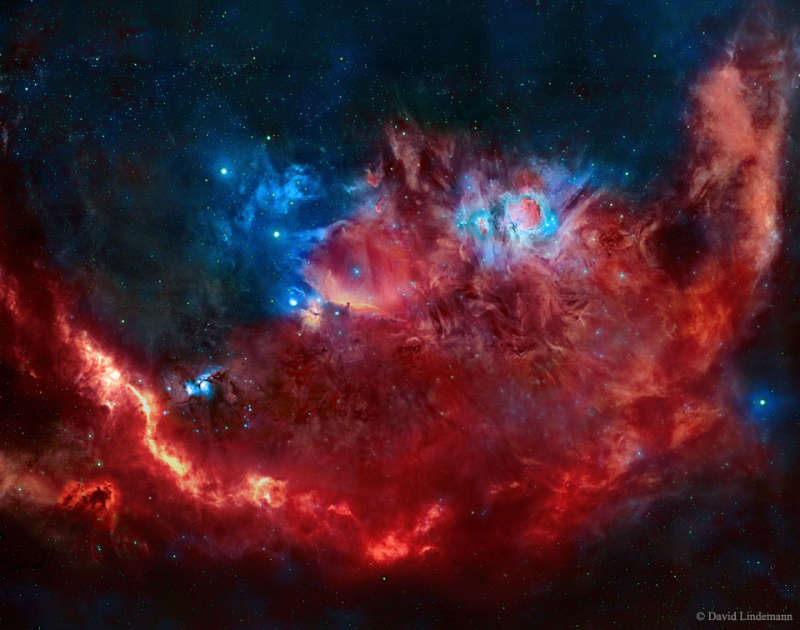Credit & Copyright: David Lindemann
Explanation:
When did Orion become so flashy?
This colorful rendition of part of the
constellation of Orion comes from red light emitted by
hydrogen and
sulfur
(SII), and blue-green light emitted by
oxygen
(OIII).
Hues on the
featured image
were then digitally reassigned to be indicative of their
elemental origins -- but also striking to the
human eye.
The breathtaking composite was
painstakingly composed from
hundreds of images which took nearly 200 hours to collect.
Pictured, Barnard's Loop, across the image bottom,
appears to cradle interstellar constructs including the intricate
Orion Nebula seen just right of center.
The Flame Nebula can also be quickly located,
but it takes a careful eye to identify the slight indentation of the dark
Horsehead Nebula.
As to Orion's flashiness -- a leading explanation for the origin of
Barnard's Loop is a
supernova
blast that occurred about two million years ago.
Share the Sky: NASA Open API for APOD
1999 2000 2001 2002 2003 2004 2005 2006 2007 2008 2009 2010 2011 2012 2013 2014 2015 2016 2017 2018 2019 2020 2021 2022 2023 2024 2025 |
Yanvar' Fevral' Mart Aprel' Mai Iyun' Iyul' Avgust Sentyabr' Oktyabr' Noyabr' Dekabr' |
NASA Web Site Statements, Warnings, and Disclaimers
NASA Official: Jay Norris. Specific rights apply.
A service of: LHEA at NASA / GSFC
& Michigan Tech. U.
|
Publikacii s klyuchevymi slovami:
Orion - Orion Nebula - Orion - Tumannost' Oriona
Publikacii so slovami: Orion - Orion Nebula - Orion - Tumannost' Oriona | |
Sm. takzhe:
Vse publikacii na tu zhe temu >> | |
